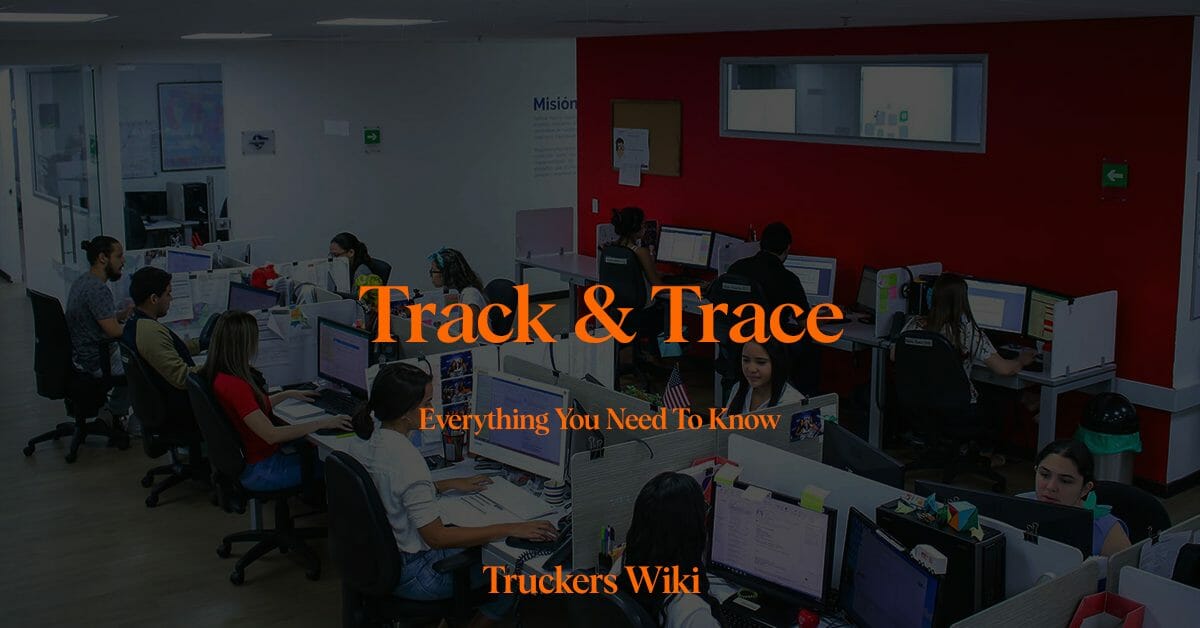
Table of Contents
What is Track and Trace in Trucking
Track and Trace refers to the systems and processes used to monitor the location and status of shipments as they move from the origin to their destination.
It is also a job position, filled usually by a track and trace coordinator-specialist or by a dispatcher.
Here are the primary aspects of Track and Trace in the trucking industry.
Real-time Tracking
This allows shippers, carriers, and receivers to know the exact location of a shipment in real-time. This is typically achieved through GPS devices on trucks or trailers.
Milestone Updates
Apart from continuous tracking, carriers provide updates when the shipment reaches specific milestones, like when it’s loaded, when it passes through certain checkpoints, when it’s delayed, or when it’s successfully delivered.
Predictive Analytics
Modern tracking systems can predict ETAs (Estimated Time of Arrival) based on the current location, speed, traffic conditions, and other variables.
Documentation
Electronic documents, such as Bills of Lading or Proof of Delivery, can be linked to tracking systems to provide a comprehensive view of the shipment’s status, including any documentation associated with it.
Alerts & Notifications
Automated alerts can be set up to notify relevant parties of delays, deviations from the route, or other significant events that might impact the delivery schedule.
Integration with Other Systems
Track and trace systems often integrate with other software solutions used by shippers and carriers, such as Transportation Management Systems (TMS) or Warehouse Management Systems (WMS).
Transparency for Customers
In many industries, especially e-commerce, end customers demand visibility into their orders’ status. Track and trace capabilities allow businesses to provide their customers with real-time information about their shipments.
Addressing Issues in Real-Time
If a problem arises, such as a truck breakdown or a traffic delay, the tracking system can alert relevant parties, enabling them to take corrective actions promptly. This can include rerouting other trucks, adjusting schedules, or informing the receiver of a delay.
Data Collection & Analysis
Over time, tracking data can be analyzed to identify trends, inefficiencies, or areas for improvement in a carrier’s operations.
Who is Involved in Track and Trace
Freight Carriers and Trucking Companies
They are directly responsible for the transportation of goods, so they typically provide tracking systems (often GPS-based) on their trucks or containers.
Third-party Logistics Providers (3PLs)
3PLs manage transportation logistics on behalf of shippers. Many offer integrated track and trace solutions that pull data from multiple carriers, giving shippers a single platform to monitor their shipments.
Freight Brokers
Brokers, who connect shippers with carriers, may also provide tracking services, ensuring that shipments they’ve arranged are monitored throughout the transit process.
Shippers
Larger shippers may have their own in-house track and trace systems, especially if they manage their own fleet of vehicles.
They might also integrate data from carriers or 3PLs into their own systems to provide real-time updates to their customers or internal stakeholders.
Technology Providers
There are numerous software and technology providers in the logistics space that offer specialized track and trace solutions. These might range from standalone software to comprehensive Transportation Management Systems (TMS) with integrated tracking features.
Receivers
Receivers can also engage in track and trace. Once a shipment is dispatched, they are often in direct contact with carriers.
Customs and Regulatory Bodies
For international shipments, customs or other regulatory agencies may use track and trace systems to monitor the movement of goods across borders, ensuring that customs declarations match the actual cargo and that regulations are being followed.
Track and Trace Job Position
There is a specific job position dedicated to track and trace.
This position requires strong communication skills, familiarity with transportation management systems (TMS), problem-solving skills, and the ability to multitask.
Here are the job positions that cover track & trace.
Track and Trace Coordinator/Specialist
Primary Responsibilities
Monitor shipments, provide updates to clients, liaise with carriers, and address any issues that may arise during transit.
Dispatcher
They coordinate the movement of trucks and drivers. Part of their responsibility often involves keeping track of where each truck is and ensuring timely deliveries.
Learn more about Dispatcher here.
Logistics Coordinator
While not exclusively a track and trace role, logistics coordinators often handle track and trace responsibilities as part of their broader duties.
Primary Responsibilities
Oversee the movement of goods from origin to destination, coordinate with carriers, and ensure timely delivery.
Customer Service Representative (in a logistics company)
They might be tasked with providing tracking updates to customers, addressing concerns, and resolving issues related to shipments.
Freight Broker
While their primary role is to connect shippers with carriers, they also need to monitor the shipments they’ve arranged and keep their clients updated.
External
LeanGroup article about the job of track & trace specialist.

